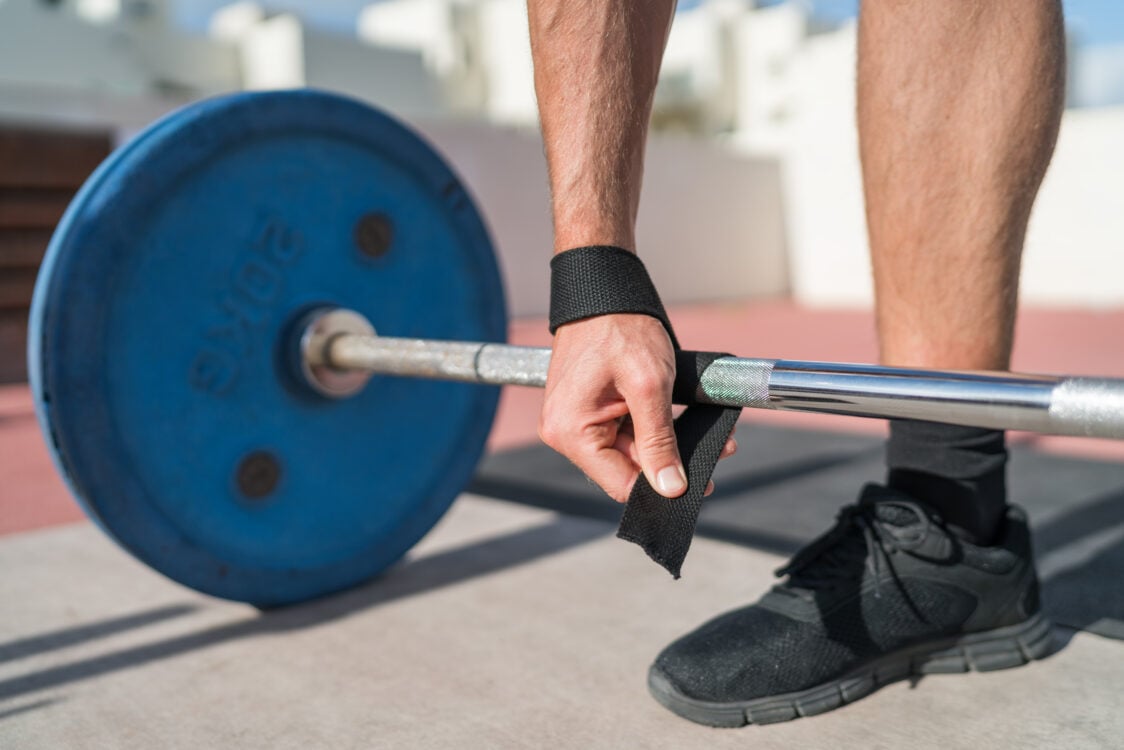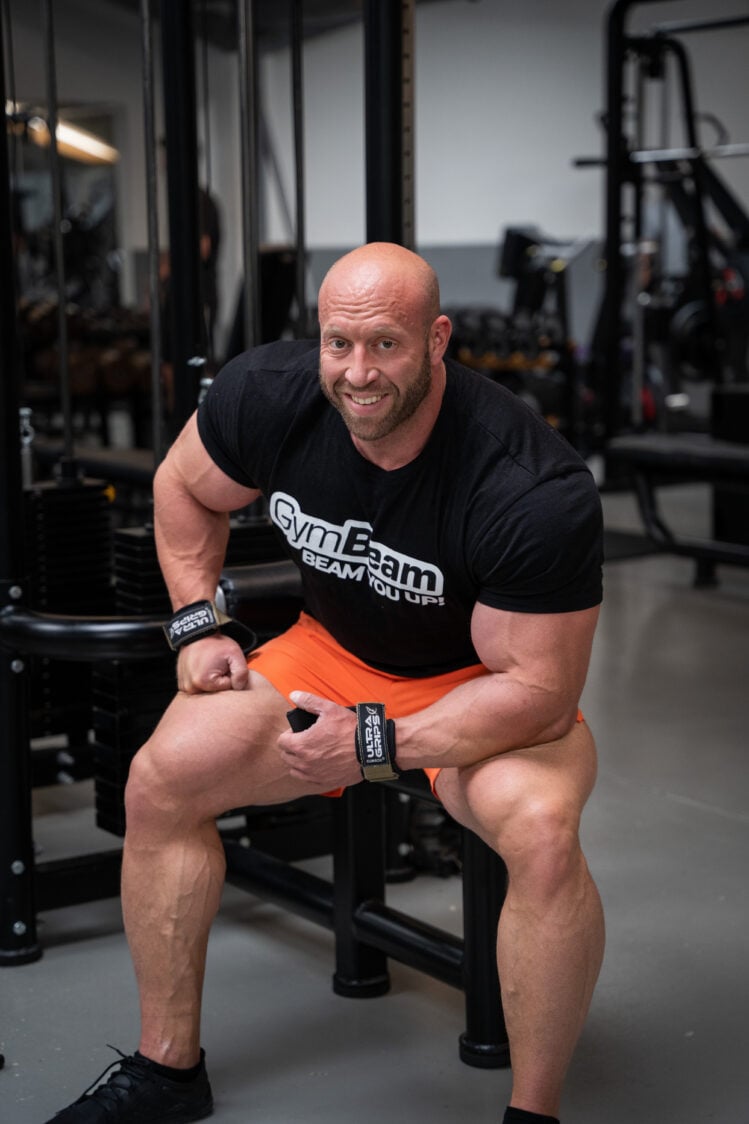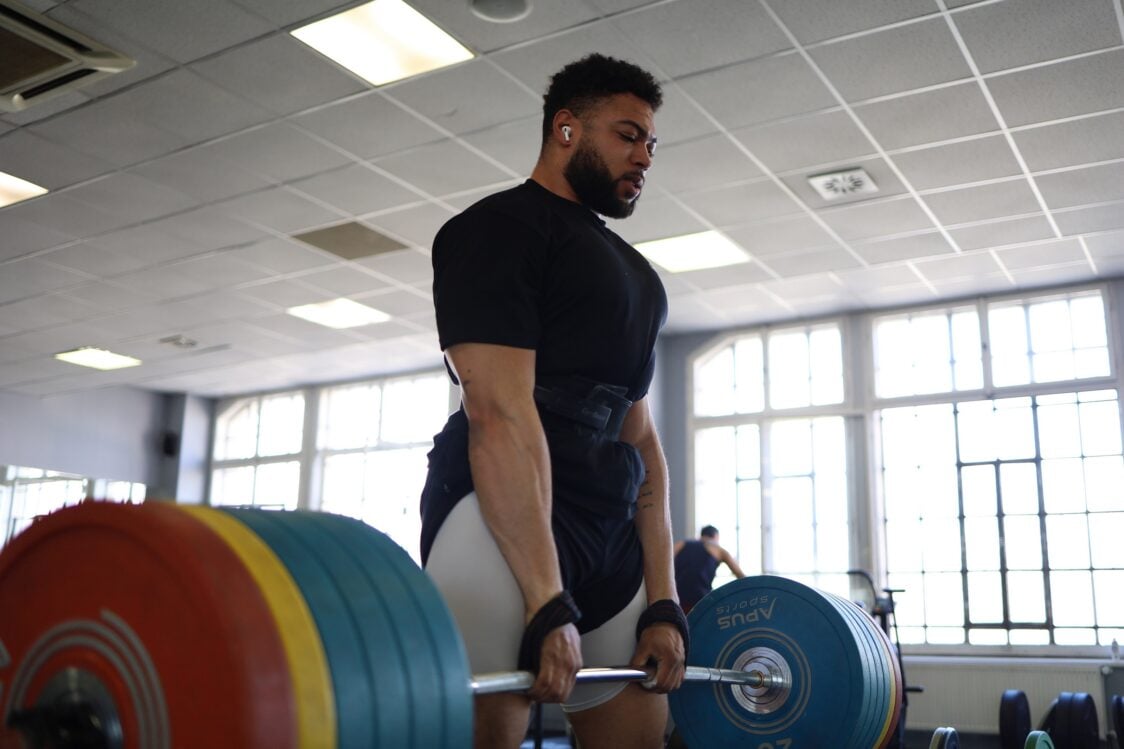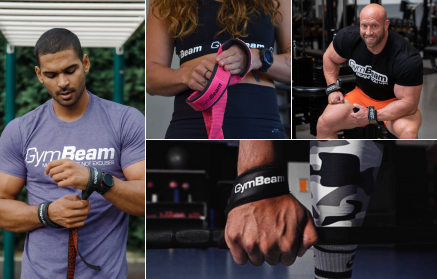Table of Contents
Have you ever experienced the frustration of your grip failing you during a heavy deadlift, causing you to lose your grip on the bar? You’re definitely not alone in this struggle. Many individuals possess the strength in their back, legs, and arms, but find their progress hindered by a weak grip during exercises that require a strong hold. Fortunately, the solution to this predicament lies in lifting straps. By using lifting straps, you can effectively strengthen your grip and unlock new personal bests in your workouts.
What are lifting straps?
Lifting straps, made of durable materials such as cotton, nylon, or leather, are training aids designed to enhance grip when lifting heavy weights in the gym. One end of the strap is wrapped around the wrist, while the other end is securely attached to the bar. By using lifting straps, you can effectively reduce forearm and finger tension during exercises like deadlifts and other pulling movements. The result is a stronger grip that enables you to lift and hold heavier barbells for extended periods or perform a greater number of repetitions. Lifting straps are commonly utilized by powerlifters, weightlifters, crossfitters, strongmen, bodybuilders, and even regular gym-goers who aim to enhance their performance. [1]
Why should you use lifting straps?
There are numerous reasons why you might want to pack lifting straps in your gym bag. They offer a number of benefits, whether it is performance, safety, or comfort during exercise.
1. Lower risk of injury
Lifting straps can lighten the grip while reducing the tension in ligaments, tendons, and muscles of the hand and forearm, which can alleviate the strain on these areas. This, in turn, reduces the risk of injuries such as tears or overloading caused by excessive loads. If you have calluses on your palms or surface injuries from previous training sessions and prefer not to use gloves, lifting straps can offer added comfort. [2]
2. Stronger grip
This training aid acts as a helpful assistant for your fingers, palms, wrists, and forearms. It alleviates the strain they endure when lifting heavy weights. You’ll particularly value its support in exercises where grip strength plays a crucial role in determining success, such as deadlifts, bent-over barbell rows, or dead hangs. With a stronger and more secure grip, you can achieve new personal bests or perform more repetitions with the same weight. Say goodbye to worrying about the barbell slipping out of your hands. [2–3]
If you are interested in how to adjust the weight according to your current goals, you should definitely check out our article: How Much Weight to Lift for Muscle Growth, Strength, or Weight Loss?

3. Greater focus on performance
With the aid of lifting straps, you can reduce the need to focus solely on gripping a barbell or pull-up bar, allowing you to concentrate more on executing the proper technique and engaging the targeted muscles. This way, you’ll avoid the frustration of the bar slipping out of your hands or experiencing forearm discomfort during your training. By gaining better control over the barbell, your self-confidence will increase, particularly when dealing with heavier weights. [3]
A high-quality pre-workout can also help improve your concentration during exercise. Come and pick yours with the help of our article: How to Choose and Use the Most Effective Pre-Workout Supplement?
4. Better training stimulus
Every strength athlete welcomes the ability to train with heavier loads and perform extra reps. This leads to a more significant training stimulus, prompting the body to adapt by fostering greater muscle growth and strength gains. In essence, better-quality training has a positive impact on physique development over time. [3]
If you are committed to serious strength training and striving to achieve specific goals, following a well-designed training plan is essential. Check out our article that can help you create an effective training plan: How to Create a Quality Gym Training Plan?

When should you use lifting straps?
To fully capitalize on the advantages of lifting straps, it is important to use them exclusively for exercises and situations where their utilization is logical and relevant.
- Lifting straps are beneficial for exercises involving free weights such as barbells, kettlebells, and dumbbells, as well as during training sessions on the pull-up bar.
- Lifting straps are excellent for exercises such as deadlifts (classic, Romanian, and sumo variations), bent-over barbell rows, dumbbell bent-over row, Bulgarian split squats, dumbbell step-ups, kettlebell swings, or the farmer’s carry exercise.
- Lifting straps are also used for weightlifting exercises such as snatch or clean.
- They are suitable for a variety of exercises, including push-ups, dead hang, hanging leg raises (toes to bar), and various other pull-up bar exercises.
- Use lifting straps primarily when working with heavy weights, when aiming to increase the number of repetitions or to extend your grip on the pull-up bar.
- Competitors should be aware that the use of lifting straps is generally prohibited in powerlifting or weightlifting events. However, they can utilize liquid or powdered chalk to prevent slipping and improve grip. [3–4]
Remember that lifting straps should not be relied upon as a substitute for a strong grip. Try to use them only when necessary, such as in situations where you anticipate not being able to maintain a secure grip on the bar for an extended duration. By incorporating exercises without the use of lifting straps, you will actively strengthen the muscles in your forearms and fingers, which may prove useful in everyday life, for example, when carrying a heavy bag of groceries.
Who will benefit the most from lifting straps?
Lifting straps offer benefits to strength athletes aiming to enhance their performance in exercises that rely on grip strength. This includes powerlifters, weightlifters, crossfitters, bodybuilders, and other fitness enthusiasts who frequent the gym. However, lifting straps are not suitable for complete beginners, who are instead advised to prioritize developing their grip strength. It is also essential for beginners to focus on mastering correct technique rather than solely lifting heavy weights. [4]
This sports accessory is also beneficial for women who possess ample strength but may be limited by a smaller palm size, which can affect their grip. It is also useful for individuals getting back into exercising after recovering from a forearm or wrist injury. However, it is crucial to consult with a doctor or physiotherapist before incorporating them into your routine. [1]
You might be interested in these products:
What types of lifting straps are there?
Lifting straps are categorized based on their shape and method of use. If you are considering purchasing them, it is essential to evaluate the advantages and disadvantages of each type before making a decision.
1. Lasso lifting straps
These are probably the most popular type of straps frequently encountered in the gym. One end features an eyelet that you put your hand through, while the other end is wrapped around the barbell. The length of the strap allows for multiple wraps around the barbell. [5]
- Advantage: Secure attachment to both the bar and the wrist.
- Disadvantage: Releasing from the bar may take longer.

2. Olympic lifting straps
They feature a single closed eyelet that is passed around the wrist, with the other end threaded under the barbell and secured by gripping it with the palm. These lifting straps are highly favoured by weightlifters, as they allow for a quick release of the grip on the barbell. This is particularly crucial during snatch and clean movements, where the straps are primarily used in the initial phase and are released above the head. [5]
- Advantage: Quick to attach and release from the bar.
- Disadvantage: Hard to adjust to the shape of the hand, and the attachment to the bar is not as strong.
3. Figure 8 lifting straps
These lifting straps have an 8-shaped design, which sets them apart with two eyelets. One eyelet is wrapped around the wrist, passed under the barbell, and then wrapped around the wrist again to secure it. Unlike the two previous types, these straps do not fill the space between your palm and the barbell. The figure 8 lifting straps are primarily used by powerlifters and strongmen during extremely heavy deadlifts. [5]
- Advantage: The entire palm is in contact with the bar.
- Disadvantage: Are not suitable for Olympic weightlifting and cannot be pulled down as easily as lasso lifting straps.

4. Lifting hooks
There are also lifting straps that feature a metal hook at one end. These straps are attached to the wrist, and the hook is simply latched onto the barbell. However, the fit of the hook on the barbell is not always optimal, which is why they are not commonly used.
- Advantage: No need to wrap them around the bar.
- Disadvantage: Do not fit all types of bars.
How to secure lifting straps?
By following our guide, just about everyone can learn how to properly use lasso or figure 8 lifting straps. Initially, you will need to concentrate on the technique, but after a while, you will find that it becomes second nature.
How to secure lasso lifting straps?
- First, thread the end of the lifting strap through the eyelet, creating a loop.

- Pass your hand through the loop so that the loose end rests on your palm. Then, gently tighten the loop to ensure it is not too loose.

- Next, place your hand on the barbell and thread the loose end of the lifting strap around the barbell, underneath it, once or multiple times. Finally, secure the wrapped lifting strap with a firm grip of your hand. Repeat the same process with the other lifting strap, and you are ready to begin your workout.

- To release the lifting strap, simply let go of the barbell and unwind it.
How to secure figure 8 lifting straps?
- Pass your hand through the loop of the lifting strap until it reaches your wrist.

- Stand next to the barbell, thread the second loop underneath it, and then slide it onto the same wrist. Firmly grip the barbell. Repeat the same process with the other lifting strap, and you are ready to begin your workout.

- To release the figure 8 lifting strap, simply let go of the barbell and slide the upper loop off of your wrist.
What are the main takeaways?
Lifting straps are fundamental exercise aids that can make lifting heavy weights easier for you. They improve your grip, making your workout more effective, comfortable, and even somewhat safer. However, it’s important to use them only for heavy weights, higher reps, or longer holds when your grip strength is not sufficient. For a traditional strength training session, reach for classic lasso or figure 8 lifting straps, as they are the most suitable ones. On the other hand, weightlifters may prefer Olympic lifting straps, which are more easily released.
If you enjoyed the article and found it informative, don’t forget to share it with your friends.
[1] Torokhtiy Weightlifting. How to Use Lifting Straps: A Full Guide. – https://torokhtiy.com/blogs/guides/how-to-use-lifting-straps
[2] What Do Lifting Straps Do? Purpose Explained - Inspire US.– https://www.inspireusafoundation.org/what-do-lifting-straps-do/
[3] Stefan, R. How to Use Weightlifting Straps to Gain Strength and Make Progress. – https://barbend.com/how-to-use-lifting-straps-for-weightlifting/
[4] Silverberg, A. Lifting Straps vs Lifting Hooks: Differences, Pros, Cons. – https://powerliftingtechnique.com/lifting-straps-vs-lifting-hooks/
[5] Horton Barbell. The 4 Different Types of Lifting Straps (Which One Is Best?). – https://hortonbarbell.com/the-4-different-types-of-lifting-straps-which-one-is-best/

